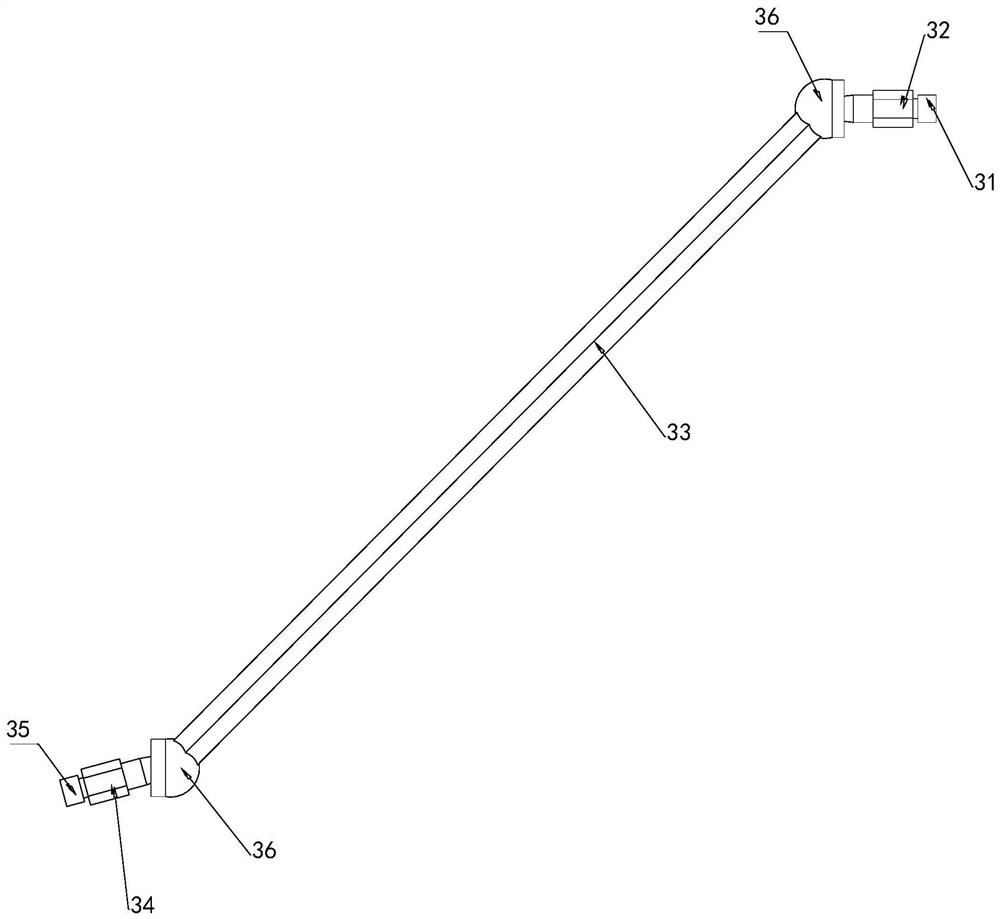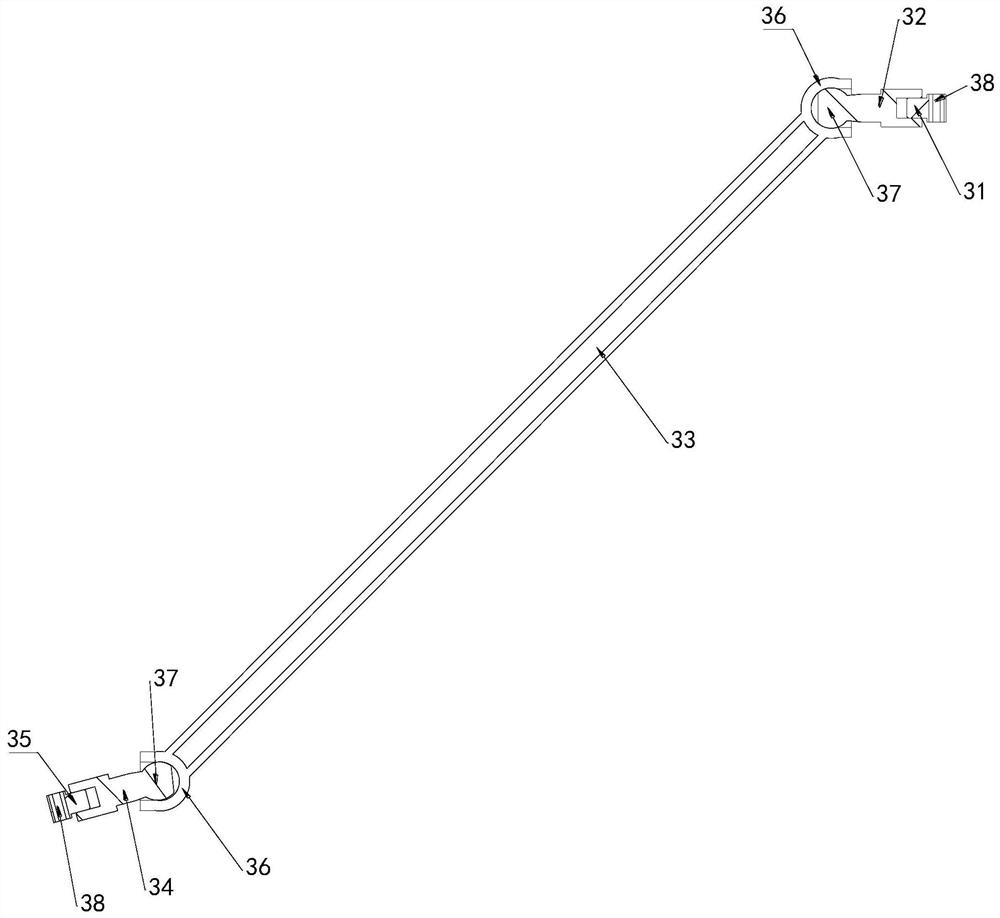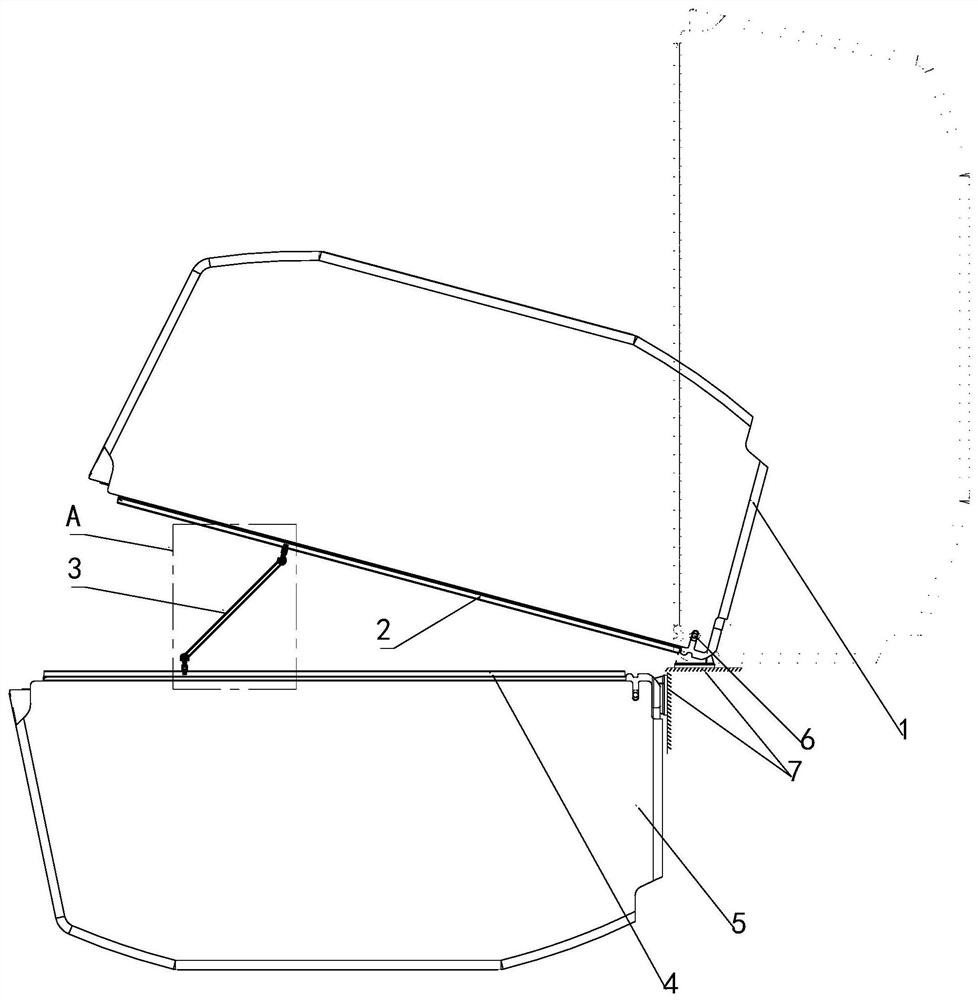Flip positioning locking device, scientific experiment cabinet for space station and quick flip method
A scientific experiment, positioning and locking technology, applied in the field of space station experiments, can solve the problems of lack of self-locking function, complex structure of the device, unsuitable for use in space stations, etc., and achieve the effect of flexible adjustment of the flip angle, easy operation, and simple structure
- Summary
- Abstract
- Description
- Claims
- Application Information
AI Technical Summary
Problems solved by technology
Method used
Image
Examples
Embodiment 1
[0039] Such as figure 1 , figure 2 and Figure 4As shown, a kind of space station scientific experiment cabinet quick-flip positioning locking device of this embodiment includes a pole 33, a hinge and a connecting piece, and the two ends of the pole 33 are respectively rotatably connected with a hinge, and the hinge It is detachably connected with the connecting piece and can form a locking gap for locking the structure to be locked during the connection process.
[0040] Both ends of the pole 33 in this embodiment are respectively hinged to the hinge through a ball joint structure. The ball joint structure is used to rotate and connect with the hinge, which is convenient for installation and can realize multi-angle rotation.
[0041] In this example, if figure 1 , figure 2 and Figure 4 As shown, ball sockets 36 or ball sockets 37 are respectively provided at both ends of the rod 33 , and ball sockets 37 or ball sockets 36 are provided on the hinge. A ball groove 36 ...
Embodiment 2
[0052] Such as image 3 and Figure 5 As shown, a scientific experiment cabinet for a space station of the present embodiment includes the locking device 3, and also includes a plurality of experimental cabinet components, each group of experimental cabinet components includes a plurality of experimental cabinet bodies, and a plurality of experimental cabinet bodies are surrounded by Arranged to form a cylindrical shape, multiple groups of the test cabinet components are arranged in sequence along the axial direction of the cylindrical shape; each of the experimental cabinet bodies is provided with a slide rail on an end surface close to the inner side of the cylindrical shape , the slide rail extends along the circumference of the cylindrical shape; the connecting piece can move in the slide rail, and lock the slide rail during the connection process with the hinge piece. Since multiple groups of experimental cabinet components are respectively arranged in the aircraft cabin...
Embodiment 3
[0058] Such as image 3 and Figure 5 As shown, the present embodiment a kind of fast flipping method of scientific experiment cabinet for space station, comprises the following steps:
[0059] Install the first hinge and the second hinge at the two ends of the pole 33 respectively, and install the first connector and the second connector in the first slide rail 2 of the first experiment cabinet body 1 and the second experiment cabinet respectively. In the second sliding rail 4 of the body 5; connect the first hinge with the first connecting piece until the locking gap between the first hinge and the first connecting piece hugs the track of the first sliding rail 2 noodle;
[0060] Loosen the fixed connection between the second experimental cabinet body 5 and the space station 7, turn over the second experimental cabinet body 5 around the rotating shaft 6 of the adapter, and after the second experimental cabinet body 5 is turned over to the required position, adjust the seco...
PUM
 Login to View More
Login to View More Abstract
Description
Claims
Application Information
 Login to View More
Login to View More - R&D
- Intellectual Property
- Life Sciences
- Materials
- Tech Scout
- Unparalleled Data Quality
- Higher Quality Content
- 60% Fewer Hallucinations
Browse by: Latest US Patents, China's latest patents, Technical Efficacy Thesaurus, Application Domain, Technology Topic, Popular Technical Reports.
© 2025 PatSnap. All rights reserved.Legal|Privacy policy|Modern Slavery Act Transparency Statement|Sitemap|About US| Contact US: help@patsnap.com



